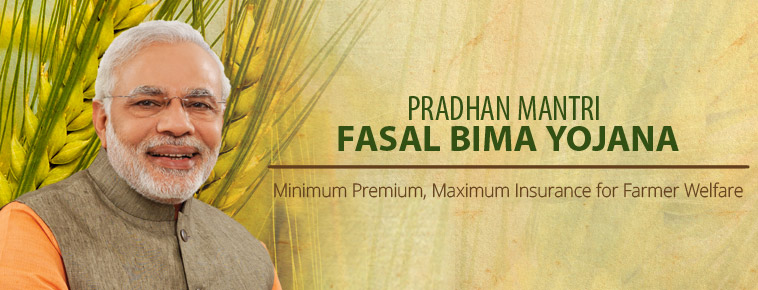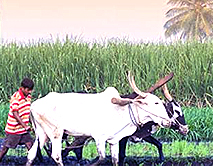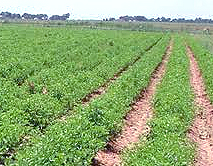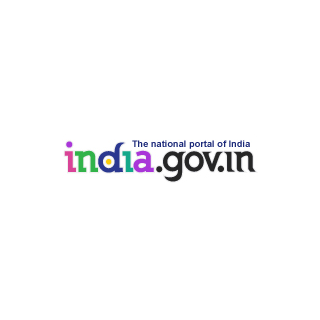
India is the land of farmers where the maximum proportion of rural population depends on agriculture. Hon'ble Prime Minister Shri Narendra Modi unveiled the new scheme Pradhan Mantri Fasal Bima Yojana (PMFBY) on 13th January, 2016
This scheme will help in decreasing the burden of premiums on farmers who take loans for their cultivation and will also safeguard them against the inclement weather.
It has also been decided to make the settlement process of the insurance claim, fast and easy so that the farmers do not face any trouble regarding the crop insurance plan. This scheme will be implemented in every state of India, in association with respective State Governments. The scheme will be administered under the Ministry of Agriculture and Farmers Welfare, Government of India.

- There will be a uniform premium of only 2% to be paid by farmers for all Kharif crops and 1.5% for all Rabi crops. In case of annual commercial and horticultural crops, the premium to be paid will be only 5%.
- The premium rates to be paid by farmers are very low and balance premium will be paid by the Government to provide full insured amount to the farmers against crop loss in any natural calamities.
- There is no upper limit on Government subsidy. Even if balance premium is 90%, it will be borne by the Government.
- Earlier, there was a provision of capping the premium rate which is low claims being paid to farmers. Now this is removed and farmers will get claim against full sum insured without any reduction.
- The use of technology will be encouraged to a great extent. Smart phones, Remote sensing drone and GPS technologies will be used to capture and upload data of crop cutting to reduce the delays in the claim payment.
- Allocation of the scheme presented in budget 2016-2017 is Rs.5, 550 cores.
- The insurance plan will be handled under a single insurance company, Agriculture Insurance Company of India (AIC).
- PMFBY is a replacement scheme of National Agriculture Insurance Scheme (NAIS) and Modified National Agriculture Insurance Scheme (MNAIS) and hence exempted from the service tax.
Objectives of the scheme
- To provide insurance coverage and financial support to the farmers in the event of failure of any of the notified crop as a result of natural calamities, pests & diseases.
- To stabiles the income of farmers to ensure their continuous process in farming.
- To encourage farmers to adopt innovative and modern agricultural practices.
- To ensure flow of credit to the agriculture sector.
Covers under the scheme
- Coverage of the farmers
- Coverage of the crops
- Coverage of the Risk
- Exclusion of the Risk
- Sum Insured/Limits of Coverage
Coverage of the farmers
All farmers including sharecroppers and tenant farmers growing the notified crops in the notified areas are eligible for coverage. The non-loanee farmers are required to submit necessary documentary evidence of land records prevailing in the State Records of Right (RoR), Land possession Certificate (LPC) etc. moreover, applicable contract, agreement details, other documents notified permitted by concerned State Government.
- Compulsory Component All farmers availing Seasonal Agricultural Operations (SAO) loans from Financial Institutions (i.e. loanee farmers) for the notified crops would be covered compulsorily.
- Voluntary Component The Scheme would be optional for the non-loanee farmers.
- Special efforts shall be made to ensure maximum coverage of SC/ ST/ Women farmers under the scheme. Budget allocation and utilization under this should be in proportion of land holding of SC/ ST/ General along with Women in the respective state cluster. Panchayat Raj Institutions (PRIs) may be involved for the implementation and also obtaining framers feedbacks on these crop insurance schemes.
Coverage of the crops
- Food crops (Cereals, Millets and Pulses)
- Oilseeds
- Annual Commercial / Annual Horticultural crops
Coverage of the Risk
Following stages of the crop and risks leading to crop loss are covered under the Scheme.
- Prevented Sowing/ Planting Risk: Insured area is prevented from sowing planting due to deficit rainfall or adverse seasonal Conditions.
- Standing Crop (Sowing to Harvesting): Comprehensive risk insurance is provided to cover yield losses due to non- preventable risks, viz. Drought, Dry spells, Flood, Inundation, Pests and Diseases, Landslides, Natural Fire and Lightening, Storm, Hailstorm, Cyclone, Typhoon, Tempest, Hurricane and Tornado.
- Post-Harvest Losses: coverage is available only up to a maximum period of two weeks from harvesting for those crops which are allowed to dry in cut and spread condition in the field after harvesting against specific perils of cyclone and cyclonic rains and unseasonal rains.
- Localized Calamities: Loss/ damage resulting from occurrence of identified localized risks of hailstorm, landslide, and Inundation affecting isolated farms in the notified area.
Exclusion of the Risk
The insurance cover will not be applicable in the damage of crops due to any of the following reasons.
- War & kindred perils
- Nuclear risks
- Riots
- Malicious damage
- Theft or act of enmity
- Grazed and/or destroyed by domestic and/or wild animals and other preventable risks shall be excluded.
Sum Insured/Limits of Coverage
In case of Loanee farmers under Compulsory Component, the Sum Insured would be equal to Scale of Finance for that crop as fixed by District Level Technical Committee (DLTC) which may extend up to the value of the Threshold Yield of the insured crop at the option of insured farmer. The value of the threshold yield is lower than the Scale of Finance; higher amount shall be the Sum Insured.
Multiplying the National Threshold Yield with the Minimum Support Price (MSP) of the current year arrives at the value of sum insured. Wherever, Current year's MSP is not available, so previous years MSP shall be adopted.
The crops for which, MSP is not declared, farm gate price established by the marketing department, board shall be adopted.

The Scheme shall be implemented on an 'Area Approach Basis' (i.e., Defined Areas) for each notified crop for widespread calamities. The assumption that all the insured farmers, in a Unit of Insurance, should be defined as "Notified Area" for a crop, face similar risk exposures, incur to a large extent, identical cost of production per hectare, earn comparable farm income per hectare, and experience similar extent of crop loss due to the operation of an insured peril, in the notified area. The Unit of Insurance can be demographically mapped with region having homogenous Risk Profile for the notified crop.
For Risks of Localized calamities and Post-Harvest losses on account of defined peril, the Unit of Insurance for loss assessment shall be the affected insured field of the individual farmer.
Implementing Agency
The overall control on implementation of insurance companies will be under Ministry of Agriculture & Framers Welfare. The Ministry designated empanelled AIC and some private insurance companies presently to participate in the Government sponsored agriculture, crop insurance schemes. The choice of which private company is left to the states. There will be one insurance company for the whole state.
Selection of Implementing Agency may be made for up to three years however, the State government/ UT and the concerned insurance company are free to renegotiate the terms if relevant. This will facilitate the insurance company to establish the credibility among the farmers through investment out of the premium savings in various welfare activities for socio-economic development.

The existing State Level Co-ordination Committee on Crop Insurance (SLCCCI), of the concerned State will be responsible for monitoring of the schemes programme in their state. However, a National Level Monitoring Committee (NLMC) under the chairmanship of Joint Secretary (Credit), Department of Agriculture cooperation and farmers welfare (DAC & FW) will monitor the scheme at the national level.
It is proposed to take following monitoring measures for effective implementation during each crop season to ensure maximum benefits to the farmers:
- The Nodal Banks intermediaries may collect the list of individual insured farmers (both loanee and non-loanee) with requisite details like name, fathers' name, Bank Account number, village, categories - Small and Marginal group, Women, insured holding, insured crops, sum insured, premium collected, Government subsidy etc from concerned branch in soft copy for further reconciliation. This will be done online once the E platform is put in the place.
- After receiving the claims amount from the concerned Insurance Companies, the financial institutions/banks should remit/transfer the claim amount to the account of beneficiaries within a week. This will be transferred online directly by the Insurance company into the accounts of farmers.
- The list of the beneficiaries (bank-wise and insured area-wise) may also be uploaded on the crop insurance portal and website of the concerned insurance companies.
- About 5% of the beneficiaries may be verified by the Regional Offices/ Local level Offices of Insurance Companies who will send the feed back to concerned District Level Monitoring Committee (DLMC) and State Government/ State Level Coordination Committee on Crop Insurance (SLCCCI).
- At least 10% of the beneficiaries verified by the insurance company may be cross verified by the concerned District Level Monitoring Committee (DLMC) and they should send the feed back to State Government.
- 1 to 2% of the beneficiaries may be verified by the Head Offices of the insurance company/ Independent Agencies appointed by the Central Government/ National Level Monitoring Committee and they should send the necessary feed back to Central Government.
Moreover, District Level Monitoring Committee (DLMC) already overseeing the implementation & monitoring of the ongoing crop insurance schemes like National Agricultural Insurance Scheme (NAIS), Weather Based Crop Insurance Scheme (WBCIS), Modified National Agricultural Insurance Scheme (MNAIS) and Coconut Palm Insurance Scheme (CPIS) shall be responsible for proper management of the Scheme.
Exclusive web portal and Mobile App
The Government of India has recently launched an Insurance portal for better administration, coordination, proper dissemination of the information and transparency for the framers.
An android based "Crop Insurance App" has also been launched which could be downloaded from the website of Crop Insurance, Department of Agriculture cooperation and farmers welfare (DAC & FW).






